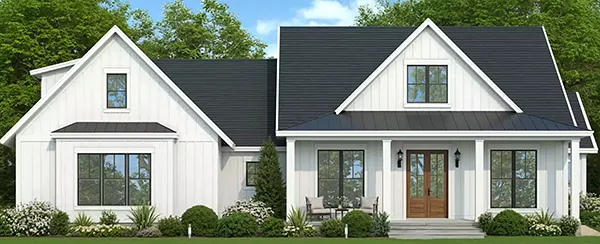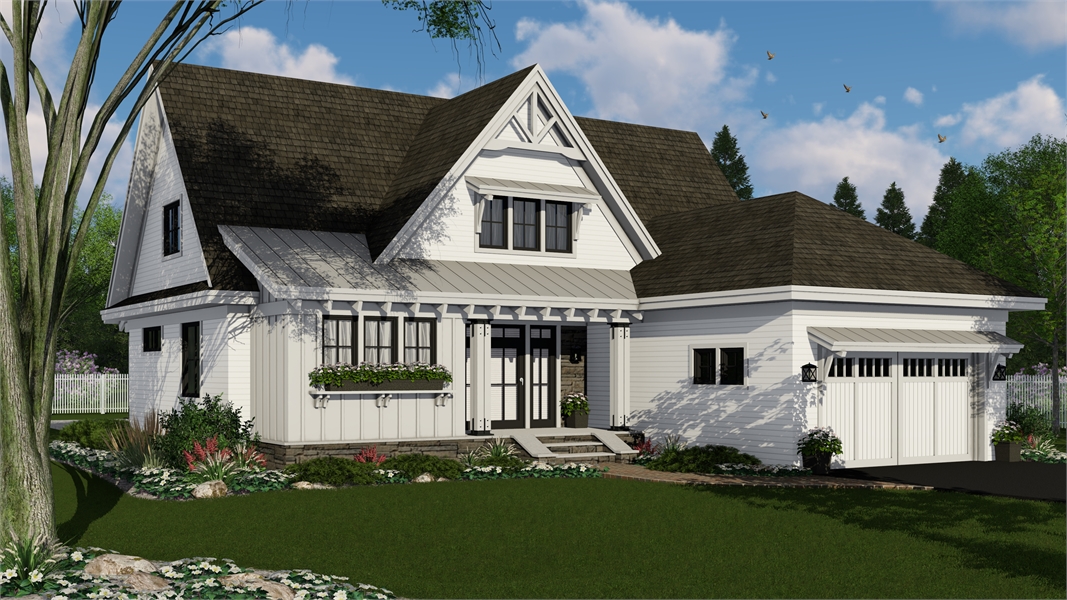How Many Trees Does It Take to Build a House?
The first step to putting up the frame of a house is typically a trip to a lumberyard to pick up ready-cut pieces of wood, but that wasn't always the case. Back in the old days, when houses were usually built by the soon-to-be homeowners, people had to harvest trees themselves. Knowing how many and of what size to fell was a must, because it saved time and meant that shelters could be built much more quickly—definitely important for homesteaders.
Modern convenience has made many of us oblivious to the amount of timber that goes into our homes. If you’ve ever wondered how many trees went into your home, here are some simple calculations that foresters use to determine the lumber yield of trees.
Board Footage
When you’re looking for a way to describe the amount of wood in a tree, you refer to board footage. Since there are 12 board feet in every cubic foot, you just need to determine the volume of a tree to put its wood yield into terms that are a bit more useful for us to understand.
The first step is to determine the height of a given tree, which can be achieved with the use of a clinometer. Using basic trigonometry with the known distance from the tree—a forestry standard of 66’, or one chain length, from the days when chains were used to drag timber out of forests—and the angles from your eye level to the base and the top of the tree, a clinometer will figure out the height, in feet, for you. Next is to determine the diameter of the tree at chest height, or about 4.5 feet from the ground, using a caliper or diameter tape. Alternatively, use Diameter=Circumference/3.14 to figure out diameter using a regular tape measure. Either way, you’ll need to divide the diameter by 2 to get the radius for the rest of the calculations, and you’ll want to divide this radius by 12 put it in feet rather than inches, unless you’re working with a huge tree and it was in feet in the first place!
These two measurements are all you need. Find the area of the imaginary cross-section you took of the tree at chest height using Area=3.14 x Radius2, because we’re assuming that the tree is circular here. From this area we can figure out cubic feet using Cubic Feet=(Area x Height)/4, where 4 is used to account for the taper of the tree from the base to the top. With this volume known, all you have to do is multiply it by 12 to get board feet!
If this seems like a lot of work, just remember that foresters do this all the time to keep track of how forests mature and to help make sustainable harvesting possible!
House Construction
Now that you know what board feet are, you can try to figure out how many trees it takes to build a house. Of course, the exact amount required to build every wood-framed house varies, and estimates vary slightly across the construction industry as well. To keep it simple and stick to a good average, say that 6.3 board feet are required for every square foot of house. So, a 1,000 square foot home would need 6,300 board feet to complete, while 12,600 board feet would be necessary for a 2,000 square foot home. According to the Census Bureau, the average American home built in 2013 was 2,600 square feet, and it would have required 16,380 board feet to build!
So what does that mean in trees? For the sake of discussion, consider a mature pine with a height of 80’ and a diameter of 2’. Using the method detailed above, you will find that its lumber yield is about 754 board feet. And if you require 16,380 board feet to build the average home nowadays, that would mean almost 22 mature pines are needed to fill that demand.
As you consider this information, remember that it pertains only to the trees required for the framing of a house—not any of the extras. Hardwood floors, cabinets, etc. could easily double the number of trees needed to complete a home. It takes decades to produce that amount of lumber sustainably, so make sure you build your home to last and make the most out of the trees that go into it.



.png)
.png)


